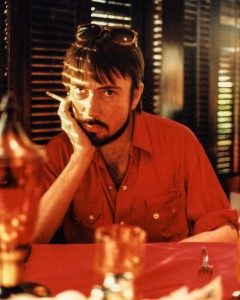
© Frances Aronson, 1984.
Garland Wright directed some of the most significant stage productions in the U.S. between 1970 and his untimely death in 1998 at the age of 52. He influenced countless artists who worked with him, and pushed the American Regional Theater to a new level of maturity with innovative management and financial strategies at the vaunted Guthrie Theater. Paradoxically, he also was, and remains, one of the least-well-known artistic leaders in the modern era.
A director of great—albeit sometimes perplexing—vision and intellect, his innovative stage productions articulated his unique point-of-view, and often left his audiences and drama critics electrified, mystified, or irritated, sometimes all on the same night! That said, the true dynamism in Wright’s work came from his exploration of the inside of the ‘process’: his developmental rehearsal methods were as eclectic and unpredictable as the productions he directed. With The Tempest as his touchstone, Garland Wright staked a claim for artistry, as opposed to finance, as the beating heart of the theater—and the regional system in particular.
Painting the Stage with People: Garland Wright and the American Theater, lays out a detailed account that will appeal equally to the theater historian, the young artist studying the process, or the theater-phile reliving memorable moments. Author Thomas Woldt has stitched together an unprecedented tapestry of outright facts and intriguing opinions within a framework of Wright’s own words, creating an ideal atmosphere for consideration of Garland Wright, who was, by turns, both “Miranda” and “Prospero” in the tempest of his own theatrical life.

